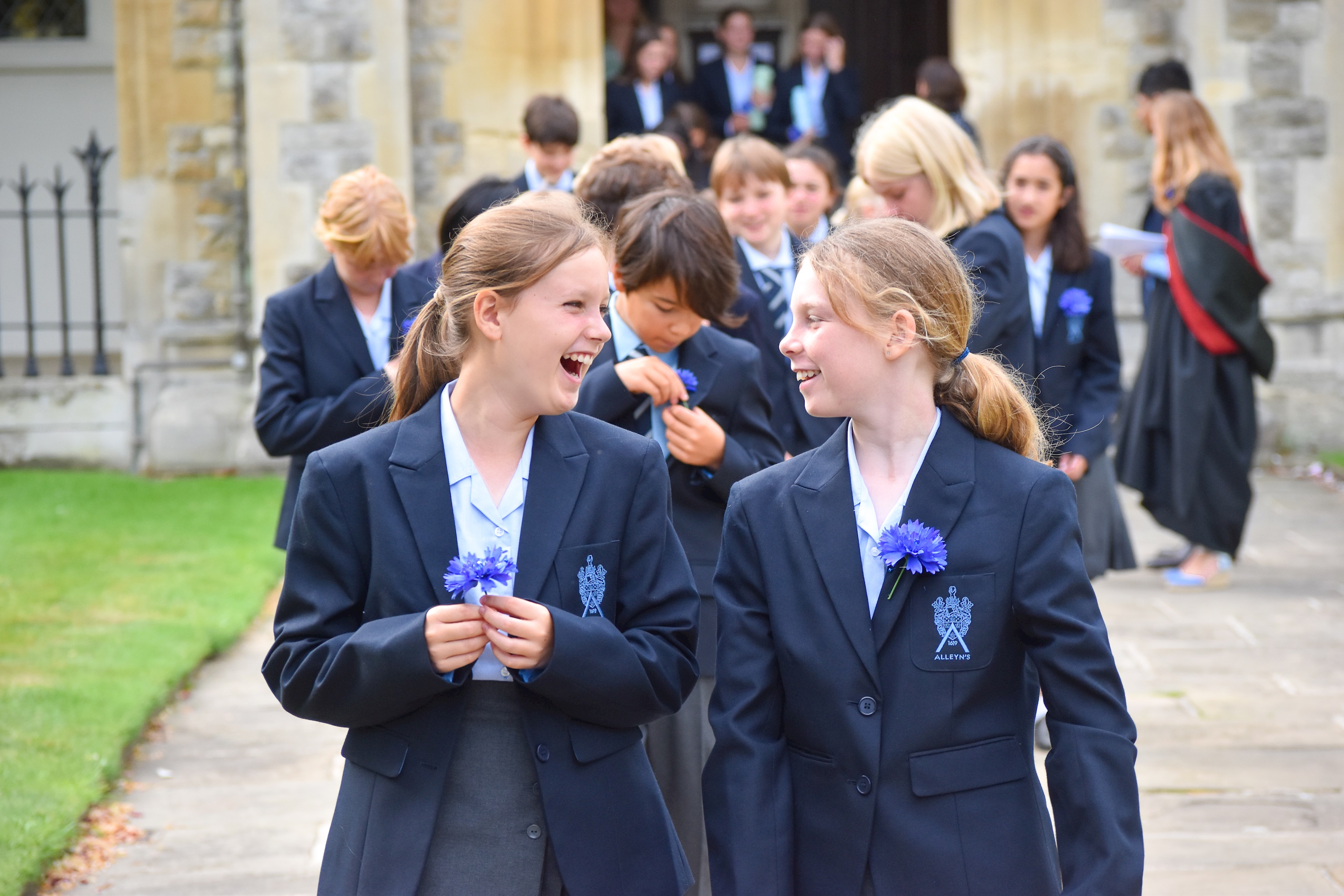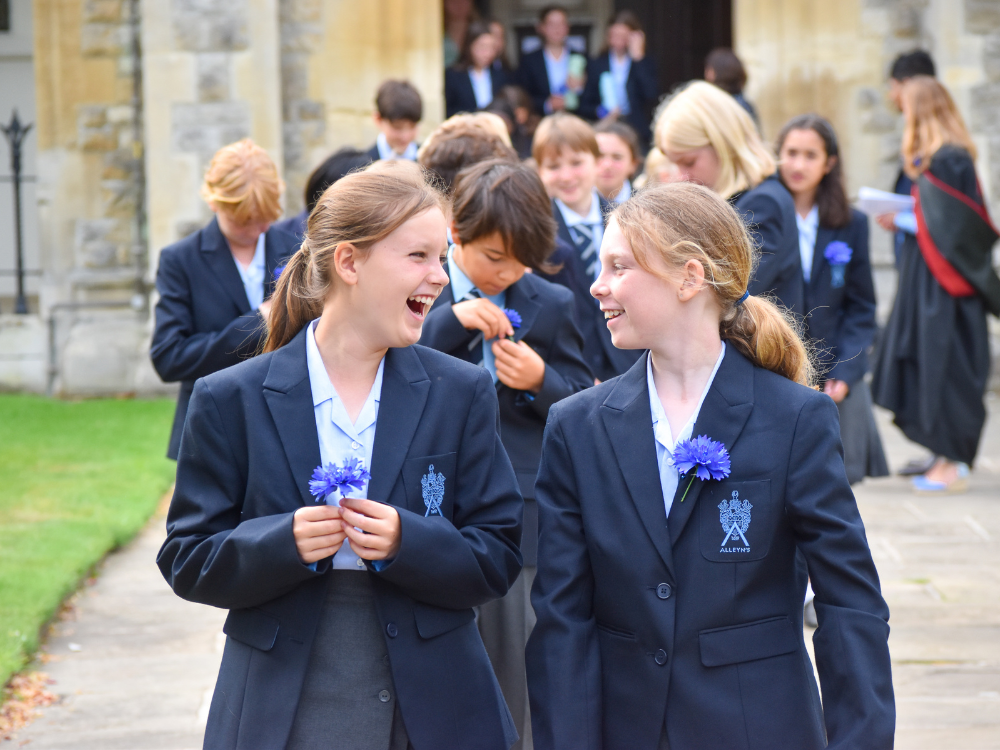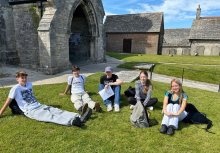Alleyn’s Geography students and teachers are having a swell time in Dorset. They’ve been exploring historical villages, studying coastal processes, learning about dune management and engaging in research projects. It’s iconic English coastline, enjoyed Alleyn’s style.
Read the daily blog from geography extraordinaire, Mr. Stevens, below.
Sunday
Arriving in Corfe Castle village at lunchtime, the students had a chance to take in the scenery of this historic town – from the Castle to the steam train. It's their contracting case study to their field trip at the start of the year, Tower Hamlets. For many, the highlight was visiting IRL – in real life – after their previous virtual trip using the school's VR headsets. For others it was the Dorset pasties.
Fieldwork involved participant observation, wandering / flâneuring, field notes: they were investigating lived experience whilst testing out different Human Geography methods.
In the evening, they explored Swanage beach, meeting local expert Barry and getting their first PAGM – Personally Awesome Geographical Moment.
Testing out Physical Geography fieldwork methods, they investigated coastal processes and management of this historically significant place.
How did it finish? Watching England beat Serbia, of course.
Geographer of the day: Harry for volunteering to dip his toes in the sea for the sake of science. Powerful Geographical knowledge through experiential learning.
Monday
Knoll beach, Studland. Exploring coastal processes of psammosere (and halosere) succession. Learning first-hand about sand dunes and management in The Purbeck National Nature Reserve and this important Site of Special Scientific Interest.
In short, it's iconic English coast with views of Old Harry Rocks and the Isle of Wight.
Fieldwork involved new equipment to the students – including ranging poles, clinometers, anemometers, quadrats – developing students' geographical terminology.
In the afternoon and evening, the hard, independent work started: planning their NEA title, enquiry questions, site selection, data collection tables, and methods. Interspersed with fruit and diet coke, ice cream and cards / football.
Early lights out in the dorms showed that they had had an enjoyably hard day activating their little great cells.
Tomorrow: data collection day!
Tuesday
Data collection day. The NEA involves students deciding on their own research project: the title and enquiry questions are a difficult start, and it's a cyclical process revisiting questions after thinking about the site selection and data availability against other things. It's challenging, and very rewarding.
The teachers have been impressed by the students' approach: all have pushed each other and worked together. Today they collected data for themselves and others, to produce unique, contemporary projects which contributed to the academic field. What an achievement!
Projects included assessments of recent sand dune management at Studland – activities and land owners involve bomb disposal, boats, tourists, and the National Trust – as well historical geography involving military monuments. Fieldwork also measured things as diverse as pH levels, land use, young people's perceptions of place, and management of longshore drift.
The quiz in the evening after a session on data collation showed the great learning made so far. Well done to the winners!
Wednesday
With NEA data collection mostly finished and our bags packed, this morning was a chance to explore something iconic: we visited Lulworth Cove, Stair Hole and Durdle Door.
Is this discordant or concordant coastline? How has this coastline changed over the last 8,000 years? What are the interplay of physical processes that form this World Heritage Site?
And what about cliff profiles? What are the marine and sub-aerial processes acting? How does this change over different timescales and geographical scales?
In short, ask the A Level geographers!
Other geographical processes were obvious too. From the variety of languages spoken, the number of tourists, and the management by stakeholders to enable visitors to these sites. We discussed 'set-jetting' – where tourists flock to honeypot sites displayed on film – and made connections to South London's John Ruskin who said that there is an urge to say 'I was here, I saw this and it mattered to me.'
From the big screen to the small screen of the ubiquitous mobile phone, these sites play an important role in the representation of the place of Dorset around the world.
After another ice-cream, it was time to get on the coach back to London.
What a trip!






.jpg)



.png&command_2=resize&height_2=85)


.png&command_2=resize&height_2=85)

.png&command_2=resize&height_2=85)
.png&command_2=resize&height_2=85)
.png&command_2=resize&height_2=85)
.png&command_2=resize&height_2=85)


.jpg&command_2=resize&height_2=85)

.jpeg&command_2=resize&height_2=85)

.png&command_2=resize&height_2=85)

.png&command_2=resize&height_2=85)

